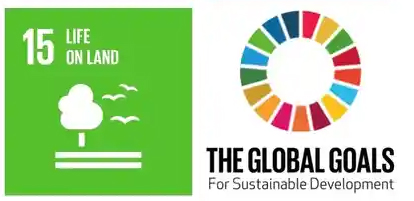Contents
Best Time to Climb Mount Kilimanjaro? Your Ultimate Seasonal Guide
Standing at 5,895 meters (19,341 feet), Mount Kilimanjaro isn’t just a mountain; it’s a dream destination for adventurers worldwide.
But this dream requires meticulous planning, and the single most important question every aspiring climber asks is: “When is the best time to climb Kilimanjaro?”
The answer isn’t one-size-fits-all. The “best” time is a personal equation that balances perfect weather, crowd levels, budget, and the unique experience you seek.
This guide breaks down Kilimanjaro’s seasons in detail, empowering you to choose the ideal window for your successful summit bid.
Understanding Kilimanjaro’s Climate: The Key to Your Decision
Located just 330 km south of the equator in Tanzania, Kilimanjaro doesn’t experience the four traditional seasons.
Instead, its climate is defined by distinct dry and wet periods, influenced by the migration of the Intertropical Convergence Zone (ITCZ).
Your climbing experience from trail conditions to summit views is directly tied to these patterns.
The Prime Time: Dry Seasons (The Best Overall Conditions)
For climbers prioritizing clear skies, stable weather, and optimal underfoot conditions, the dry seasons are unequivocally the best time to climb Kilimanjaro. These windows offer the highest statistical summit success rates.
- The Long Dry Season: June to October
- Weather: This is the coolest and driest period on the mountain. You can expect abundant sunshine, minimal precipitation, and crystal-clear visibility.Daytime temperatures on the lower slopes are pleasant, while nights, especially at summit altitude, are intensely cold but manageable with proper gear.
- What are the Advantages of Climbing Kilimanjaro during the long dry season ?
- Highest Success Rates: Stable weather means fewer weather-related turnbacks.
- Superb Visibility: Uninterrupted, breathtaking views of the plains below and the starry sky above.
- Dry Trails: Well-defined, solid paths make for safer and more enjoyable hiking.
- Considerations: This is the most popular time, so trails and campsites are busier. Booking several months in advance is essential to secure permits and the best guides for your Kilimanjaro trek .
- The Short Dry Season: January to mid-March
- Weather: Following the short rains, this period is generally warm, dry, and clear. It is often slightly warmer than the June-October season.
- What are the Advantages of Climbing Kilimanjaro during the short dry season ?
- Excellent Conditions: Similar benefits to the long dry season with fantastic weather.
- Potential for Full Moon Summits: Many operators offer climbs timed with the full moon, which illuminates the summit night climb, reducing reliance on headlamps and creating a magical experience.
- Considerations: Remains a popular time, though sometimes slightly less busy than the peak of the long dry season.
The Shoulder Seasons: A Balance of Pros and Cons
These transitional periods sit between the dry and wet seasons, offering a compelling mix of advantages and trade-offs for the flexible climber.
- November & December (“Short Rains”)
- Weather: Characterized by the “short rains,” which typically consist of brief, predictable afternoon showers. Mornings are often sunny and clear.
- What are Advantages of trekking Kilimanjaro shoulder seasons ?
- Lush Scenery: The rain transforms the mountain’s lower slopes into a vibrant, green paradise.
- Fewer Crowds: Significantly quieter trails than the peak seasons.
- Potential for Discounts: Some operators may offer better prices
- Considerations: You must be prepared for rain. The summit can be cloudy, and the trails, particularly in the rainforest zone, can be muddy.
- April & May (“Long Rains”)
- Weather: This is the true low season, dominated by the “long rains.” Expect prolonged periods of precipitation, high humidity, cloud cover, and snow at higher elevations.
- What are advantages of climbing Kilimanjaro during the rain season ?
- Solitude: The mountain is at its quietest. You will have trails and campsites largely to yourself.
- Lower Costs: This is the most affordable time to climb, with the best deals available.
- What to consider when climbing Kilimanjaro during the rain season ?
- Challenging Conditions: Constant mud, slippery rocks, and wet gear are guaranteed.
- Lower Visibility: Summit views are often obscured by clouds.
- Lower Success Rates: The demanding conditions and colder, wetter weather makes the climb significantly tougher.
Key Factors to Consider When Choosing Your Climbing Season
Beyond the calendar, your decision should factor in your personal preferences:
- Weather & Summit Success: If your primary goal is to summit, the dry seasons (Jan-Mar, Jun-Oct) are objectively the best time to climb Kilimanjaro.
- Crowd Avoidance: If you value solitude and a more intimate connection with nature, the shoulder seasons (Nov-Dec) provide a fantastic compromise.
- Budget: For the most cost-effective climb, the low season (Apr-May) offers significant savings, but requires a higher tolerance for adversity. Bear in mind price for accomodation in lodges and hotels near moshi and arusha can be cheap compared to high season, though parkfees for Kilimanjaro remain the same throughout the year .
- Photography: For photographers, the clear skies of the dry seasons are ideal for landscapes, while the shoulder seasons offer lush, green foregrounds and dramatic cloud formations.
Plan Your Kilimanjaro Climb with a Local Expert
Choosing your dates is just the first step. Navigating permits, selecting the right route (like Machame or Lemosho for better acclimatization), and ensuring you have the correct gear are critical to your success.
At Blessing Safaris, we live and breathe Kilimanjaro. Our expert team, possesses intimate knowledge of every season’s micro-climates and challenges.
We don’t just book trips; we craft personalized adventures tailored to your goals, fitness level, and timeline.
- Want the classic, sunny summit experience? We’ll guide you to the prime dry seasons.
- Seeking a quieter challenge with lush scenery? We’ll help you navigate the shoulder seasons safely.
- Need a detailed packing list for rain or cold? We provide exhaustive pre-climb support.
- Stop wondering and start planning. The best time to climb Kilimanjaro is when you are ready, and we are here to make sure you reach the summit of Africa.
Frequently Asked Questions
1. What is the best time to climb Kilimanjaro?
A: The best time to climb Kilimanjaro is during the dry season, which typically runs from late June to October.
This is when the weather is most stable and there is less chance of rain and clouds obstructing the view.
2. What are the benefits of climbing Kilimanjaro during the dry season?
A: Climbing Kilimanjaro during the dry season offers several benefits, including better visibility, less chance of encountering slippery and muddy trails, and a higher success rate due to more favorable weather conditions.
3. Is it possible to climb Kilimanjaro during the wet season?
A: While it is possible to climb Kilimanjaro during the wet season, it is not recommended.
The rainy season, which usually lasts from November to May, brings heavy rainfall and increased risk of landslides and slippery trails, making the climb more challenging and potentially dangerous.
4. What is the worst time to climb Kilimanjaro?
A: The worst time to climb Kilimanjaro is during the rainy season, which runs from November to May.
The heavy rainfall and increased chances of cloudy and foggy conditions can make the climb difficult and dangerous.
5. Are there any other factors to consider when deciding on the best time to climb Kilimanjaro?
A: Yes, there are a few other factors to consider, such as crowds and cost.
The dry season tends to be the most popular time to climb Kilimanjaro, so expect larger crowds and potentially higher prices for tours and accommodations.
The shoulder seasons of January-February and September-October are often less crowded and can offer a good balance of favorable weather and lower costs
6. Can you climb Kilimanjaro at any time of the year?
A: Technically, yes, you can climb Kilimanjaro at any time of the year.
However, it is not recommended to climb during the rainy season due to safety concerns and lower chances of success.
It is best to plan your climb during the dry season for the most enjoyable and successful experience.
Conclusion
Your Kilimanjaro trek will be a defining story, and the season you choose sets the stage.
Do you envision summit day under a brilliant blue sky, or do you prefer the mystery of misty, crowd-free trails?
Your ideal climb balances the elements that matter most to you: guaranteed sunshine, potential cost savings, or the gift of solitude.
This decision is the cornerstone of your preparation. By booking early, you lock in your spot on the route that calls to you.
By training with your chosen season in mind, you prepare your body for the specific conditions it will face.
Remember, the right time isn’t just a date on a calendar; it’s the key that unlocks the most rewarding and powerful experience possible on the mountain.
You can proceed with booking your Kilimanjaro trip, fill the form below, Blessing Safaris Team will get in touch with you .



